December babies have as their birthstone a talisman imbued by ancient cultures with all the powers of sea and sky – two potent forces when you live off the land.
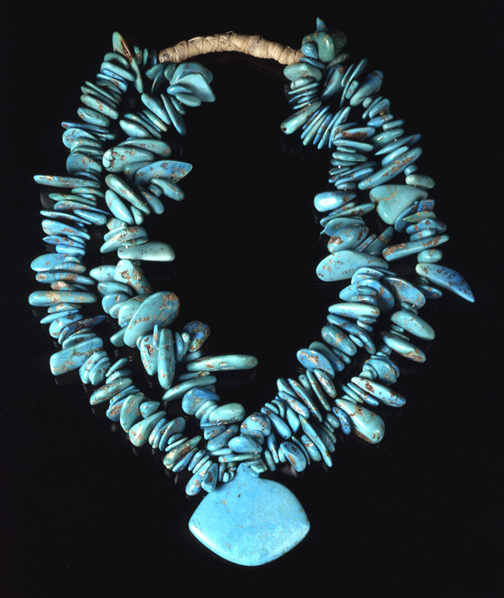
The word “turquoise” comes from the French pierre turquoise, meaning Turkish stone, and dates to the 13th century when Venetian merchants bought turquoise jewels in Turkish bazaars and resold to the European market.
But turquoise jewelry was a hot item long before then. The oldest comes from Mesopotamia (ancient Iraq), c. 5,000 B.C.
In the U.S., we tend to associate turquoise with Native American jewelry. The Navajo in particular use locally-mined turquoise in their inlay, often paired with complementary red coral, carnelian or fire opal – a palette so integral now to Arizona and New Mexico, you can find it everywhere from regional fashion to interior design. It’s one of the pleasures of landing in the desert in mid-winter to be hit in the eyes with that vibrant combination.
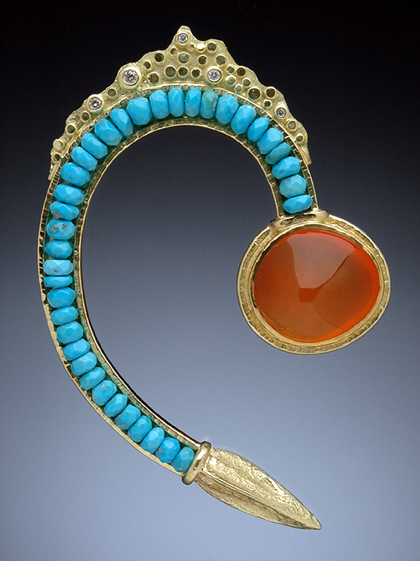
Turquoise was long believed to ward off every evil known to man. It shows up in the jewelry of ancient Asia, Tibet, Persia, Turkey and Eqypt. In ancient Rome, turquoise was believed to protect against falling horses – a common occurrence, I guess? – interesting, since the symbol for Sagittarius is the centaur.
In China and Tibet, turquoise was also worn to attract prosperity. While jade remained the ultimate talisman in China, Tibetans valued turquoise above all other gems.
Egyptians wore turquoise as far back as 4,000 B.C. It was among the gems found on the mummy of Tuthankhamen, which was decorated with 143 pieces of jewelry. King Tut ruled Egypt in the mid-1300s B.C. and those particular jewels were probably designed to avert evil in the afterlife and alert the gods to his power and importance.

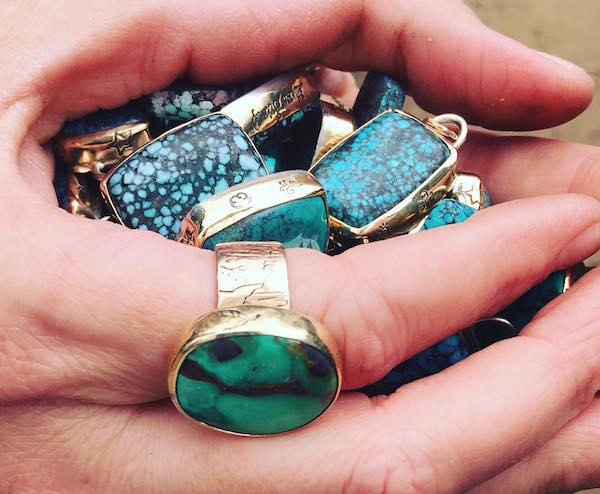
When buying turquoise: It’s wise to ask about treatments and request a guarantee of quality and origin. I learned this the hard way years ago when I bought a pair of “turquoise” earrings that faded to almost white within a year.
Turquoise has been popular for a while and there’s not that much richly-colored natural turquoise around any more. Imitations abound, including dyed organic material like coconut husks.
Untreated pure blue turquoise is particularly rare – especially the coveted sky-blue Persian variety – and that drives up prices and attracts knockoffs. Vivid blue stones from the famous Sleeping Beauty mine in Arizona are now so valuable they’re often treated like precious gems, set with diamonds and gold like this ring by Larisa Laivins at Ylang 23.
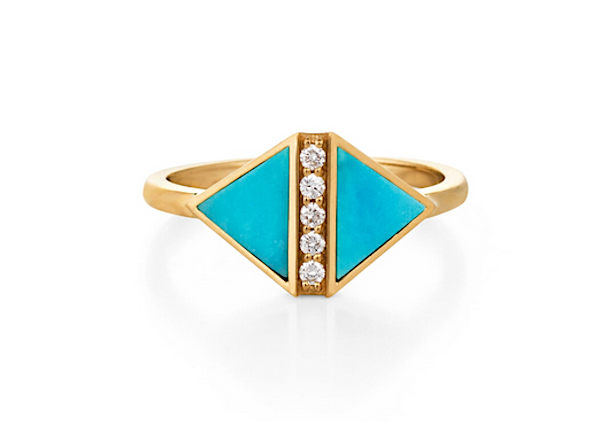
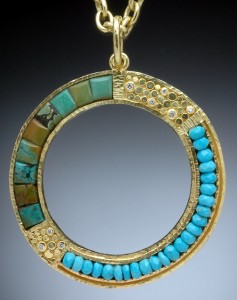
I actually love the less expensive mottled green Chinese turquoise webbed with black matrix, and designers like Nancy Michel and Hughes-Bosca make luscious jewelry by contrasting it with gold, diamonds or purer blue varieties (pictured).
Treatments are common and sellers won’t always volunteer that information. If you ask though, a reputable dealer may admit their turquoise was stabilized, which is not necessarily bad if it improves the stone permanently and not just long enough to fool unsuspecting buyers.
The stones in the earrings I mentioned looked too substantial for the costume-jewelry price I was paying; that should have alerted me. But don’t be too paranoid. I’ve purchased several varieties since from various sources, and all have held their color and finish. Ask for details about treatments. As with everything, they should be reflected in the price.
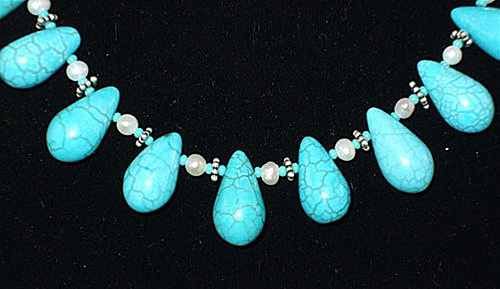
Common treatments for turquoise include colored-plastic impregnation, used to increase durability and turn whitish, porous stones blue. A similar process using wax instead of plastic can also change color and seal pores. Both can be detected with magnification, so use that loupe!
For more information on the designers featured here: Hughes-Bosca/Side Street Gallery, Quadrum and Mobilia galleries, Jes MaHarry, and Ylang 23.
Information about the history and treatment of turquoise comes primarily from Gems & Crystals from the American Museum of Natural History and Lapidary Journal. I also recommend Antoinette Matlins’ Colored Gemstones.

